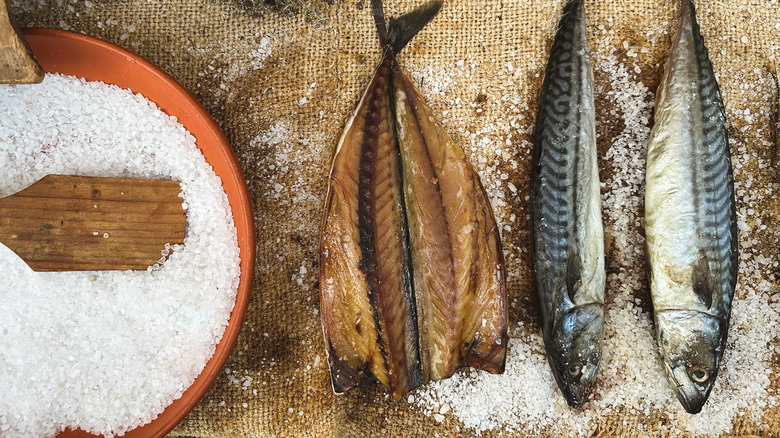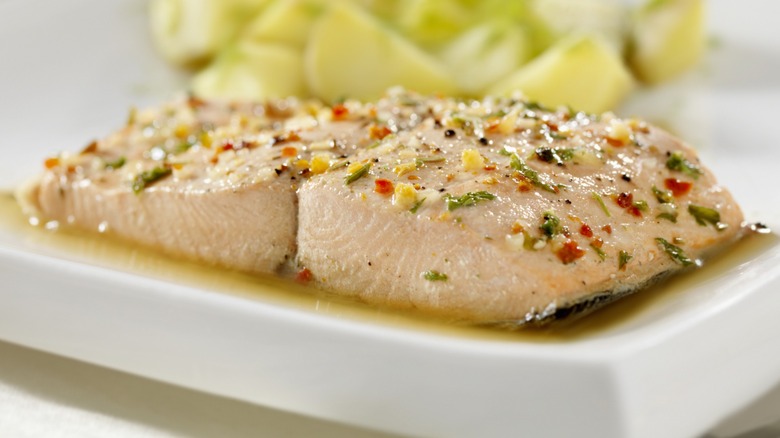The Surprising Trick That Keeps Fish Fresh And Ready To Eat For Days
Because necessity is the mother of invention, a method for preserving fish needed to be developed in the centuries before electric refrigeration became a thing. One of the preservation methods that came about over the years tapped common ingredients like olive oil and salt. Despite calling for rudimentary materials, the technique was solid enough to stop the meat from rotting — an important consideration in a time when commercial refrigeration wasn't an option. Basically, this procedure is similar to confit, but with a little less work involved.
The technique asks the person preserving the fish to prep it by poaching it first in salted water for about 10 minutes. The next step requires you to immerse the chunks of cooked fish in a budget-friendly premium olive oil. This fish must be completely covered by the oil. After making sure you properly cook your fish, soaking it in oil helps to create a barrier between the fish and the oxygen in the environment. The oil bath forms an anaerobic environment, or a habitat where bacteria cannot live.
However, the oil also serves an additional purpose. Just as it creates a barrier so that oxygen can't get into the fish, the oil also stops water from getting into the meat, too. Bacterial cells require water to restart their metabolic processes. No water means the cells don't restart their proverbial engines and food spoils more slowly as a result.
The role of salt in fish preservation
Salt as a meat curing method has been used for centuries, often in conjunction with some kind of fat or oil. In the traditional confit method, the meat — often beef, pork, or duck — is cured with salt and then cooked in fat.
In this olive oil-based shortcut version of the confit, the fish gets a bit of a salt treatment. While much of this is for the purposes of flavoring, it will play a bit of a role in the fish's preservation, too, and is worth noting. The presence of salt in the fish makes it an unfriendly environment for some bacteria because salt pulls the moisture out of the cells of the pathogen, crippling the cells' ability to produce enzymes as well as other critical functions.
What to do with the fish once it's preserved
Aside from serving the very practical purpose of preservation, the olive oil serves a flavor purpose, too. It traps the subtleties of the fish's taste in the meat. And because it preserves the fish for a time, your homemade confit is something you can keep in the fridge to use in other dishes. Basically, anywhere you might use poached fish — in homemade soups, comfort food casseroles, or a tuna salad with avocado instead of mayo — you can use this fish.
When you get ready to eat it, you'll take it out of the fridge and let it sit out until it reaches room temperature once again. This gradually re-awakens the fish's flavors so that it complements whatever you eat with it. While fish preserved this way will eventually go bad, it won't be ready for the proverbial dirt nap for weeks. And if you should be inclined to keep it in a sealed container with a lid, you'll avoid much of the discoloration that comes with the aging process as well.
In the end, implementing this method means there's no rush to eat up your fish. You can enjoy ready-to-eat fish on standby in your fridge, and it'll be just as delicious and nutritious as it was the day you first dunked it in the olive oil.


